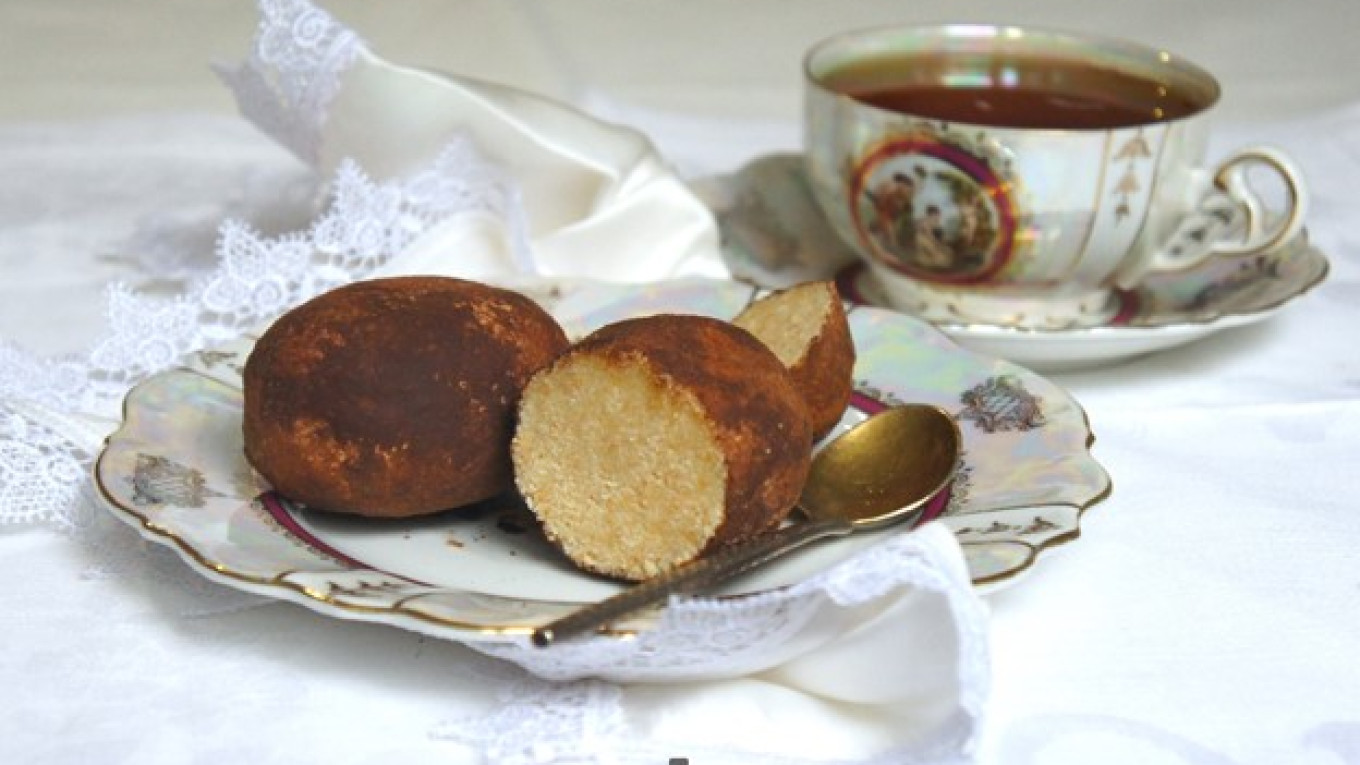One of the rites of culinary passage for foreigners in Russia is the first time they are introduced to a “chocolate potato,” one of the iconic dishes of Soviet cuisine. It was served in restaurants and student cafeterias, and often made at home. Made of crushed dry cookies or breadcrumbs mixed with butter, condensed milk and cocoa, these confections with an incongruous name are delicious. Today for millions of people in the CIS they are the taste of childhood.
Most people think that the chocolate potato is a Soviet invention. Recycling leftover cake crusts to produce inexpensive culinary happiness was surely the idea of the party bosses. But it turns out that this Soviet classic was actually born earlier.
But even if it was invented earlier, the catering industry valued this dessert for it practicality. "Recipes for pastries and cakes didn’t factor in the bits trimmed off. We had to use the scraps somehow, for example to make chocolate potatoes, to make up for the weight missing from the big cakes,” wrote Robert Kengis, author of many Soviet confectionary books. So we owe the wide-spread distribution of this dessert to the standard economy and quality control practiced in Soviet cafeterias.
Home cooks didn’t have to worry about scraps or crumbs, so we made this dessert with Jubilee cookies or vanilla-flavored rusks. Recipes passed from hand to hand, and every home cook had, as usual, her own recipe that she considered the best.
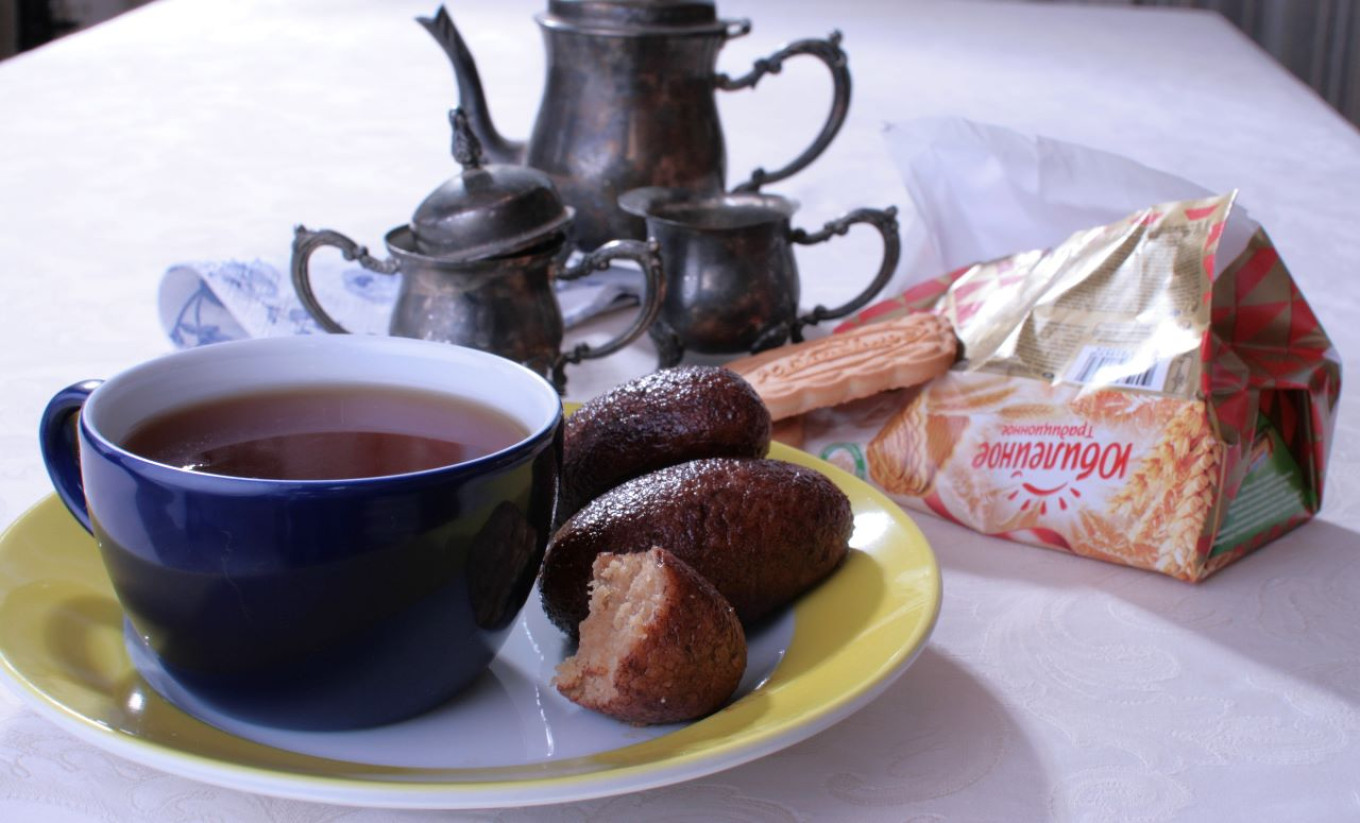
This treat was truly a household favorite all over the Soviet Union. But where did this popular recipe come from? Recipes, as we have seen, rarely appear out of nowhere. There must have been an earlier version that inspired the Soviet recipe.
Today when the chocolate potato recipe is discussed in print, it is often mentioned along with the Runeberg cake. Some culinary specialists claim that this Soviet sweet was invented by the Finnish poet, writer and journalist Johan Ludvig Runeberg (1804-1877).
Some sources ascribe the recipe to him personally, some to his wife Fredrika. Still others suggest that the poet looked over the shoulder of a chef in the town of Porvoo to see the recipe. It is true that a book published in the 1850s by Fredrika Runeberg contains a similar recipe. However, according to historians, her recipe is the same as a recipe originally (in 1840) published by the confectioner Lars Henrik Astenius.

“For 6 cakes: 100 g butter/margarine, 100 ml granulated sugar, 1 egg, 50 g crushed almonds, 150 ml finely crushed rusks, 150 ml wheat flour, 1 teaspoon baking powder, 1 teaspoon cardamom, 100 ml whipping cream, raspberry jam, powdered sugar, water, lemon and orange juice, punch. Beat softened margarine or butter with sugar until frothy and add the egg while continuing to mix. Mix the dry ingredients and add to the mixture. Add cream and, if desired, some punch. Grease cake tins and fill them with the batter. Put in a preheated oven at 200 degrees for about 20 minutes. Place a little raspberry jam on top of each cake. Mix powdered sugar with water to form a glaze and make a ring around the raspberry jam with this glaze.”
The Runeberg pastry (or cake) was very popular in Finnish restaurants and bakeries. We know, for example, that it was served in the 1860-1870s in Helsinki at the establishment of the famous pastry chef Edward Fredrik Ekberg. But note: it was baked, not made from scraps, butter and other ingredients.
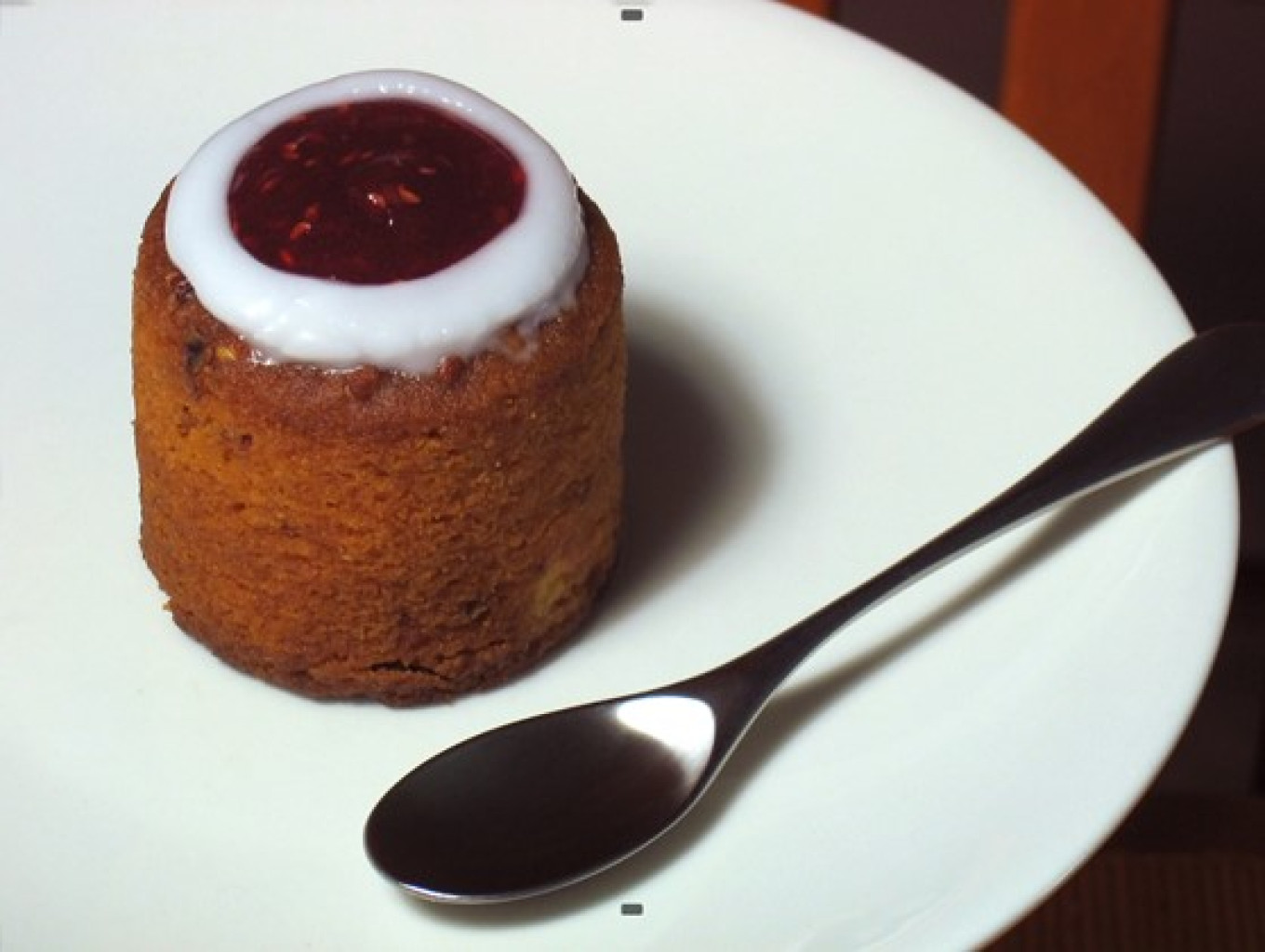
But, you might reasonably ask, how is this similar to the chocolate potatoes of Soviet childhoods? Well, it isn’t — except for the use of crushed rusks. Every analogy is approximate. But even if the Finnish recipe was the predecessor of the Russian chocolate sweet, the Soviet recipe was innovative.
The main innovation is that the Soviet chocolate potato was not baked, but simply made from cake scraps and other baked goods. They were mixed with butter, sweet cream (or condensed milk), raisins, nuts, and whatever else a cook could think of. In the Finnish recipe the cake is baked.
Some food historians state that the use of crushed cake and cookies was an innovation, too. But here we disagree. The use of crushed rusks in Russian desserts was nothing new. For example, here is a recipe from Vasily Levshin’s “Dictionary of Cookery,” published in 1796:
"Cake of wheat rusks. Grind a pound of almonds, mix with 3 eggs in a mortar. Add grated lemon peel, cinnamon and 7 eggs. Add half a pound of sugar and half a pound of grated wheat rusks. Bake in cake tin."
So fifty years before Fredrika Runeberg's recipe was being made we find a very similar recipe in Russia. The idea of using rusks, crumbled biscuits, and cookies was certainly not born in the kitchen of Porvoo (with all due respect to the culinary talents of its cooks).
But let's get back to our "potatoes.” When did this Soviet specialty appear? And what makes it Soviet?
The first references to the recipe can be found at the beginning of the 20th century as a way to use up stale (two- or three-day old) cakes, sponge cakes and other baked goods. So it could not have been included in any 19th century cookbooks. It wasn’t a culinary discovery but a business decision to make use of products that were past their sell-by date.
Confirmation of this can be found in the memoirs of Olga Shatunovskaya, who was an important figure in the Communist Party during the Soviet years. She wrote, "In Baku before the revolution, the first day a pastry cost a kopek. The next day it cost half a kopeck. And on the third day, if it was not sold, all the pastries were collected to make pastry potatoes.”
In other words, this dessert probably originated as early as the end of the 19th century or the beginning of the 20th century in public catering establishments — inns and tea-houses — as a way to recycle unsold pastries. Of course, famous establishments did not use this method, but in mass catering anything was possible.
The Soviet innovation of this dessert was moving it from a "second-rate" confection associated with stale leftovers to a dessert that was in and of itself very popular. Remember Lenin's slogan: "Socialism is accounting and control.” Every crumb had to be counted, so pastry potatoes were truly a salvation for cooks in state cafeterias and restaurants of the 1930s and 1980s.
But this dish goes far beyond the boundaries of the catering industry. It is Soviet for another reason: It is the product of chronic food shortages, scarcity, and sometimes hunger and deprivation. In that sense it is a true creation of Soviet cooking. The memoir of Boris Pasternak's wife Zinaida from the autumn of 1941 is a vivid illustration. For the November revolution holidays she managed to make some pastry potatoes.
"I had only rye flour, and I spent the whole night trying to do something with it. Finally, I seared it in a dry frying pan, crushed it, added eggs, honey, and white wine to it. The result was a delicious potato."
Today we don't need the food shortages of the Soviet period to make this treat. In the 1970s and 1980s, potatoes were usually made from Jubilee cookies, which were crumbly and sweet. Since you might not be able to find that type of cookie outside Russia, we offer a chocolate potato recipe that includes a homemade sponge cake. For the full historical experience, you can pretend that it’s leftovers, not a cake you baked the day before…
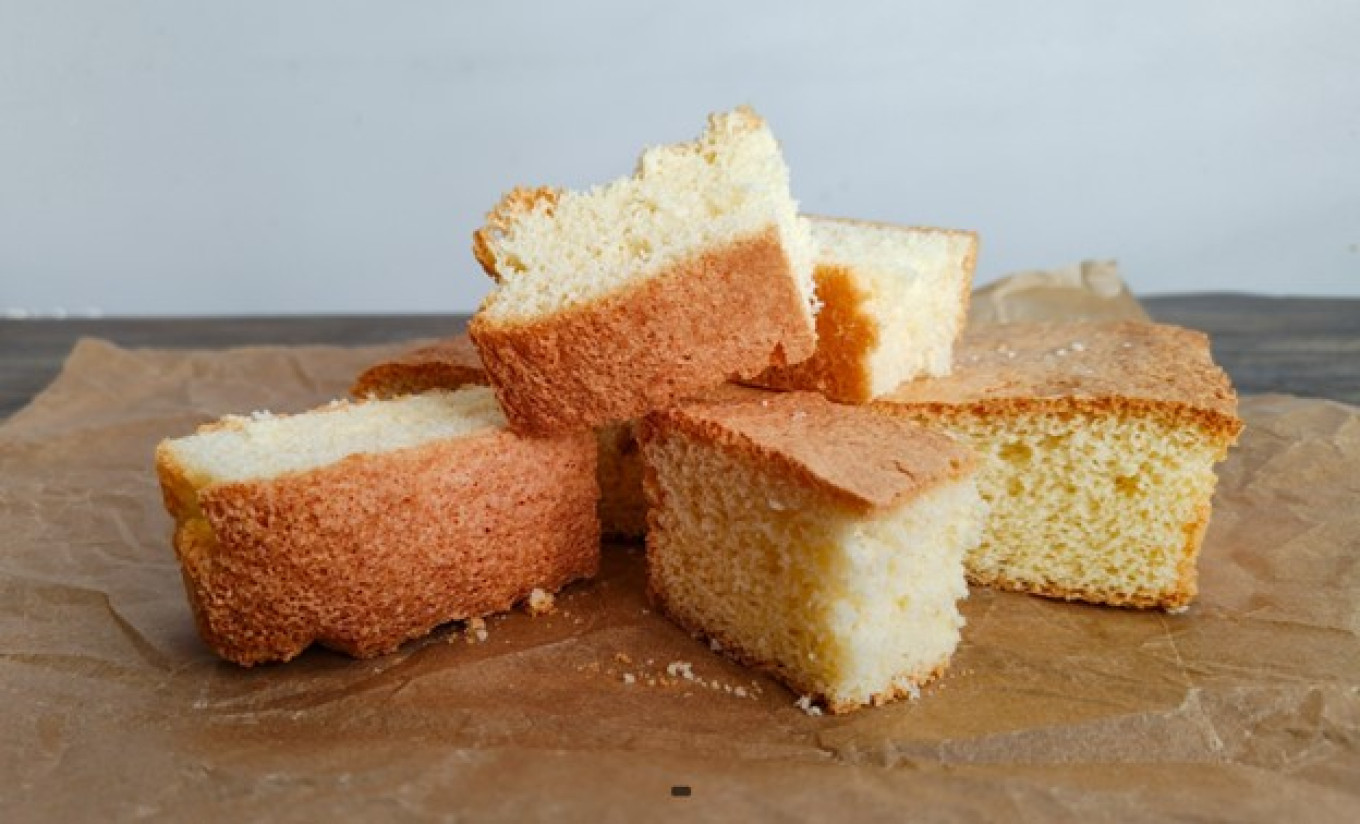
Chocolate Potatoes
Ingredients
For the sponge cake
- 3 eggs
- 100g (1/2 c) sugar
- 90g (3/4 c) flour
For frosting
- 150g (1¼ sticks or 10 Tbsp) butter at room temperature
- 180 g (generous ½ c) condensed milk
- 1 Tbsp brandy or rum (to taste)
For dusting
- 3 Tbsp cocoa powder
- 3 Tbsp powdered sugar
Instructions
- Preheat the oven to 170˚C (340˚F).
- Beat the eggs and sugar until they form a stiff white foam.
- Sift the flour over the beaten eggs and mix in gently.
- Line a pan with baking paper and pour in the dough.
- Place in the preheated oven and bake for 35 minutes; test with a dry toothpick.
- Take the cake out of the oven and leave in the pan for 8-10 hours so that the sponge cools and stabilizes.
- When the cake is thoroughly cool, prepare the frosting. Beat the butter to a fluffy white mass, and then add condensed milk in small portions while continuing to beat.
- Break the cake into pieces and grate or crush in a food processor.
- Add the frosting, saving a bit for decoration, mixed with a bit or cognac or rum. Stir the mixture.
- Divide the mixture into 8-10 equal pieces and shape into “potatoes.”
- Mix the cocoa with the powdered sugar and sprinkle over the potatoes. Let the cakes rest for 15-20 minutes and sprinkle again.
- Put the rest of the frosting in a plastic bag and snip off a small corner. Make small indentations on the potatoes and fill with a bit of frosting to make sprouts.
- Put the potatoes in the refrigerator 2-3 hours before serving.
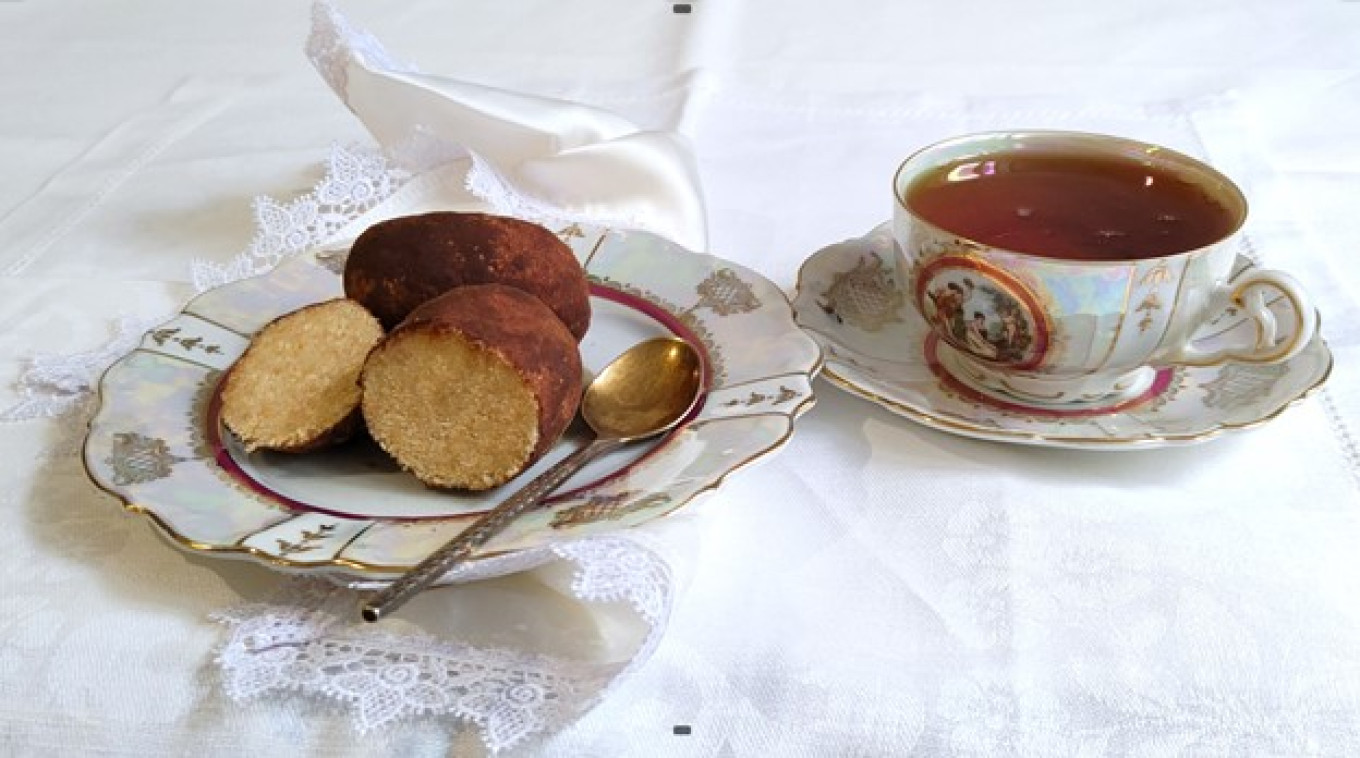
A Message from The Moscow Times:
Dear readers,
We are facing unprecedented challenges. Russia's Prosecutor General's Office has designated The Moscow Times as an "undesirable" organization, criminalizing our work and putting our staff at risk of prosecution. This follows our earlier unjust labeling as a "foreign agent."
These actions are direct attempts to silence independent journalism in Russia. The authorities claim our work "discredits the decisions of the Russian leadership." We see things differently: we strive to provide accurate, unbiased reporting on Russia.
We, the journalists of The Moscow Times, refuse to be silenced. But to continue our work, we need your help.
Your support, no matter how small, makes a world of difference. If you can, please support us monthly starting from just $2. It's quick to set up, and every contribution makes a significant impact.
By supporting The Moscow Times, you're defending open, independent journalism in the face of repression. Thank you for standing with us.
Remind me later.



